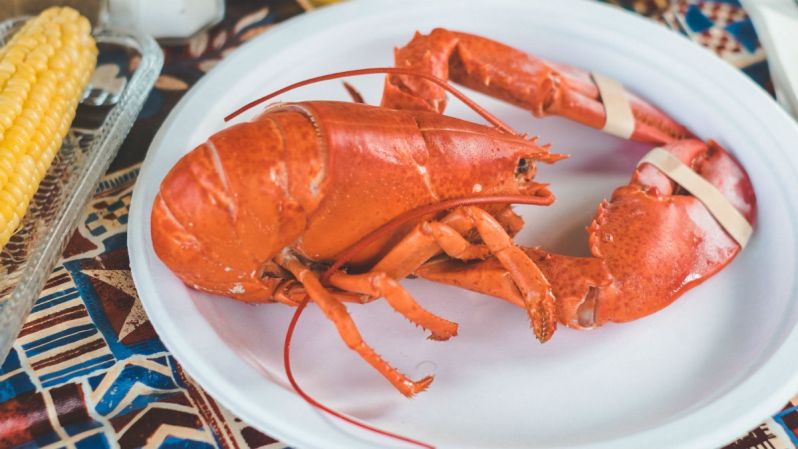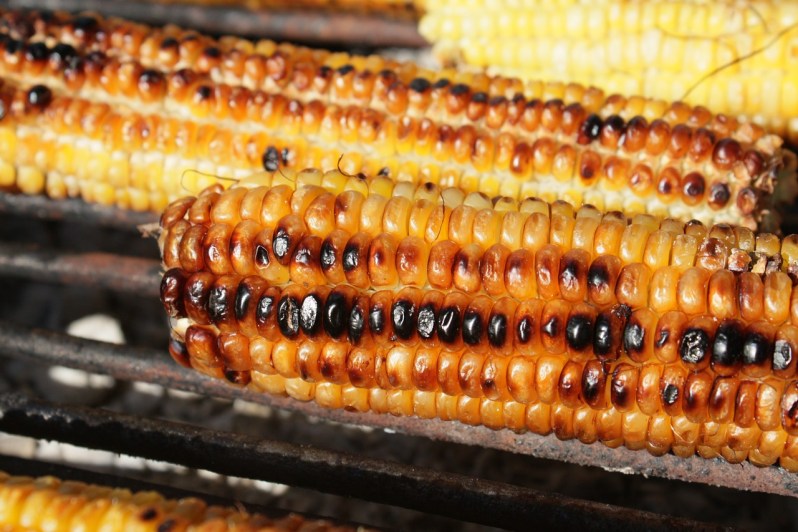
Everyone needs a little something extra to spice up everyday life — a spa day, perhaps, or a nice meal. And while ribs in the oven or a perfectly grilled steak will definitely suffice, sometimes you might think about moving from turf to surf, and what better “surf” to have than a sweet, succulent lobster? Meaty, juicy, and slathered in butter, it’s about as perfect a meal as they come — even while in lobster roll form.
For most, a nice lobster dinner sits at the apex of gourmet meals. There’s just something about the bright red body sitting on a plate that exudes class. The thing is, though, that you don’t have to go out to a fancy restaurant and shell out for that kind of meal. With a little know-how, anyone can make such an incomparable dish at home.
To get the inside scoop on cracking the secrets to cooking lobster at home, we reached out to David Ezelle, former executive chef at RingSide Fish House and Bluehour in Portland, Oregon.

Use a live lobster
As with other seafood, freshness is key for lobster. “Live is the way to go,” Ezelle said. “If you try to heat up lobster that has already been cooked, you’ll get a rubbery consistency. The best lobster is the one that is alive, then quickly dispatched and consumed.” You should be able to find live lobster at a nearby premium grocery store. You could also have a live lobster delivered to your door by The Lobster Guy.
Ideally, you would take a lobster from the grocery store (or the sea), go home, and cook it right away. Depending on your schedule, however, this may not be realistic. “If you were to cover the lobster with wet newspaper and put it in the fridge, it would probably stay alive until the following day,” Ezelle explained. “They will hold on for about 24 hours out of the water as long as there’s plenty of moisture in that wet newspaper.”
How to dispatch the lobster humanely
There’s some dispute over whether lobsters feel pain; two studies over the past 10 years or so have arrived at different conclusions. Either way, you should dispatch the lobster quickly before cooking it. The best way to go about this is to dull the lobster’s senses by putting it in the freezer for at least 20 minutes, and then splitting its skull in half with a large kitchen knife.

How to cook lobster
And now to the cooking part with ingredients and such. With the help of Ezelle, we’ve put together three methods of preparing lobster, each with its own advantages. “The most important thing to remember is the tails and the claws have to be treated differently,” Ezelle explained. “And when I say treated differently, I mean in terms of cooking time.” First up is boiling the lobster, which you’ve likely seen in movies or cartoons. This quick guide assumes that your lobster is about 2.5 to 3 pounds.
How to boil lobster
Similar to how you steam lobster, lots of water is involved.
- Fill a large pot 3/4 full with salted water.
- Bring the water to a boil and toss the whole lobster into the water.
- Once the water resumes its simmer, turn the heat down and let the lobster poach.
- After 7 minutes, the tail will have curled in on itself. Grab the lobster with a pair of tongs, and hang the tail over the edge of the pot so the claws dangle into the water.
- Cook the claws for another 7 minutes, and you’re done.

How to grill lobster
If you’re the kind of fella who takes every opportunity to use his grill, you’ll be glad to know that lobster lends itself well to grilling. Both gas grills and charcoal grills can get the job done. Mesquite is ideal if you go the charcoal grill route, though charcoal and soaked wood chips will also work. “The wood adds a nice flavor to it,” Ezelle said. “If you are using charcoal, maybe buy some wood chips and soak ‘em, and then once the coals are ready, add the wood chips over the charcoal to get a great flavor profile.”
- Dispatch the lobster in the manner described above.
- Twist off the tail and claws.
- Split the entire lobster in half so the tail meat is exposed.
- Season the tail with salt, pepper, and butter.
- Crack the claws with a mallet or cracker and pull out the raw meat.
- Put the lobster tails and claws on the grill.
- Grill on high heat for 7 minutes.*
- Flip the tail over and cook from the underside of the shell.
- The tail is done once you see bubbles of moisture between the tail meat and shell.
*Unshelled claw meat can be grilled for about the same amount of time as tail meat, as it doesn’t have the thick shell to slow down the cooking process (pictured above).
How to roast lobster
You can also simply roast lobster in your oven if that’s what you’re more comfortable with. “I prefer roasting or grilling to boiling,” Ezelle explained. “Any time you add water to any protein, you’re basically extracting flavor. If you want all of that flavor to stay in there, then the drier preparations are preferable.”
- Preheat the oven to 400 degrees Fahrenheit.
- Cut the lobster down the middle so the meat is exposed.
- Crack the claws and remove the claw meat.
- Brush melted butter onto the meat.
- Place the tail and claw meat on a baking pan and roast for about 10 minutes.
- Baste the meat with melted butter once during the cooking process.

How to eat lobster like a pro
Now it’s time to enjoy the delicious meats of your labor. If you haven’t already, now’s the time to take a mallet (make sure you’ve got all the tools you need before starting, of course) and crack the claws until the delicious claw and knuckle meat comes out. “Once the claws are done, you can either chill them and then eat them cold, or you can get right into it and eat them hot,” Ezelle said.
As for the tail meat, it should be cooked to the point where it pops right out. Your next topic of concern should be what type of sauce to enjoy with your lobster. Some folks like the unadulterated taste of lobster meat, while others enjoy it with melted butter. Ezelle also suggested trying it with a Meyer lemon vinaigrette to balance the richness of the meat, or even cocktail sauce if that’s the sort of thing you’re into. You can also use kitchen shears to get to the meat more easily if you’d like.

What are the best side dishes to enjoy with lobster?
Lobster is a luxurious and flavorful seafood that deserves to be paired with sides that complement its richness, sweetness, and delicate texture. Here are some of the best side dishes to go with lobster.
- Steamed vegetables: Asparagus, green beans, and broccoli are all classic choices for steamed vegetables to serve with lobster. They are light and refreshing, and they won’t overpower the delicate flavor of the lobster.
- Baked potato: This hearty and satisfying side dish goes well with lobster. You can top it with butter, sour cream, chives, or bacon bits.
- Salad: A light and refreshing salad is a great way to balance out the richness of the lobster. Choose a salad with a light vinaigrette dressing and fresh, seasonal ingredients.
- Corn on the cob: This classic summer side dish also goes well with lobster. The sweetness of the corn complements the flavor of the lobster, and you can cook the corn in a variety of ways, such as boiling, grilling, or roasting (just like the lobster).
- Bread: A crusty bread is a great way to sop up any of the delicious juices from your lobster dish. Choose a bread made with high-quality ingredients, such as sourdough or French bread.
No matter what side dishes you choose, be sure to let the lobster’s flavor shine through. Choose simple and elegant sides that won’t overpower the delicate flavor of this special seafood.


